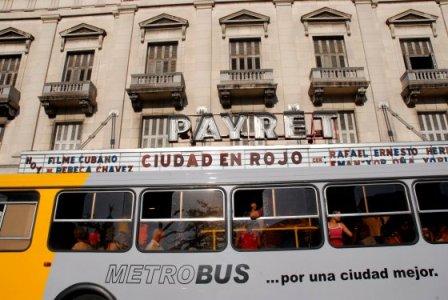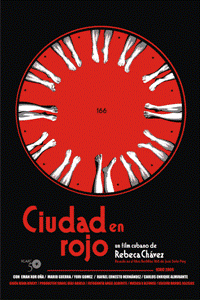Cuba’s New Film: City in Red
By Irina Echarry

HAVANA TIMES, April 9 – This title could easily describe the infernal temperature felt in Havana movie theatres as the cruel tropical summer begins to heat up across the island, or the impact that the movie Ciudad en Rojo (City in Red) has had just a few days after its world premier.
In her first full-length feature, director Rebeca Chavez tries to tackle several existential questions. Based on the novel Bertillon 166 by Jose Soler Puig, the movie shows a day in the life of Santiago de Cuba during the final days of the Batista dictatorship.
– Violence disrupts human nature.
– Ours no. Our violence is accompanied by hope. It is a violence used to save us.
The dialogue is between two of the film’s characters who employ different modes of fighting for the same end: to stop the state terror that existed in Cuba at the time. As in the book, the movie explores generational differences and different ways of fighting (ideas or weapons).
After seeing the movie, Veronica Quintero, a retired worker from the Ministry of Transportation, said, “Violence is not good, but everything depends on the circumstances. Sometimes, it is used to free a nation or several nations. One must look at how Cuba was in the 1950s; it could not carry on as it was and weapons were the most effective method to change the situation. Engaging in dialogue would not have solved anything. The images seen in the movie are how it really was; there were bodies in the streets everyday, young people and adults. Sometimes, the dead were people who had conspired against the government, but other times they were innocent people.”

Yudelsi Kindelan, a Law student, and her friends didn’t like the movie. “I read the book and liked it more than the movie. I have also read about the underground struggle in Santiago de Cuba, watched documentaries and I think that the movie was missing something. I got the feeling like I wasn’t watching a part of Cuban history, as if what was being shown wasn’t true, despite the documentary-style images and knowing how harsh things were at that time.”
If we look at what is the supposed essence of the movie, what has been announced by the media and by the director in interviews, the same questions keep repeating. Can we save ourselves by using violence? How far can it go when we give in to violence? What is left in our souls when the state of violence is over? Contrary to what is expected, there are no answers to these questions in this movie.
Arturo Contreras a security guard commented: “I liked it, everything that is said there is true. Violence is necessary… it doesn’t mean that one goes out on the streets, hitting people, but… how can you put an end to fascism without using violence? The same thing happened in Cuba.”
After asking what newspaper I work for, he said, “It’s a movie… I don’t know much about the arts, but I have studied Communications, and I’m not stupid. I can tell you that there were expressions that aren’t from the 1950s. Look… I’m no fool… when they show that close-up of the steak… with the shortages we are currently experiencing here; it makes your mouth water.
“And the young girl who says that she doesn’t want to live her life talking in a low voice? It seemed to me that she was talking about the current situation; nowadays you can’t go around saying everything you think. Sure they don’t kill anyone, but you can get into trouble.
“And the guy who only says, ‘I’m not involved in anything; I left all of that behind.’ Do you know how many people think one way and talk another? That’s the so-called double standards that have always existed, in the 1950s and today as well. And the informer? Right now, I don’t know whom I’m talking to… because I haven’t heard of your newspaper,” said Contreras.

The movie does have a contemporary feel to it. The director, anchored down by trying to be too faithful to the characters from the novel, does not give free reign to what is a much richer story: the life of women during that era.
Throughout the movie, it is women who are central to the story and drama that unfolds. They march on the streets calling for an end to the killings, they suffer the loss of their relatives, they desperately go out searching for their missing children, they distribute fliers with revolutionary slogans, they smuggle weapons and explosives at the risk of being arrested and body searched by the Civil Guard, they help combatants, and they steel weapons from the guards to give to their boyfriends to go fight with the rebels in the Sierra Maestra.
In my opinion, this story could have been better told than this cursory reflection on violence and its consequences. Rebeca Chavez is from Santiago de Cuba. When she was young, she participated in the clandestine struggle. She has talent and wants to work.
Despite its shortcomings, this is an important movie, the second directed by a Cuban woman. Hopefully, there will be many more.





